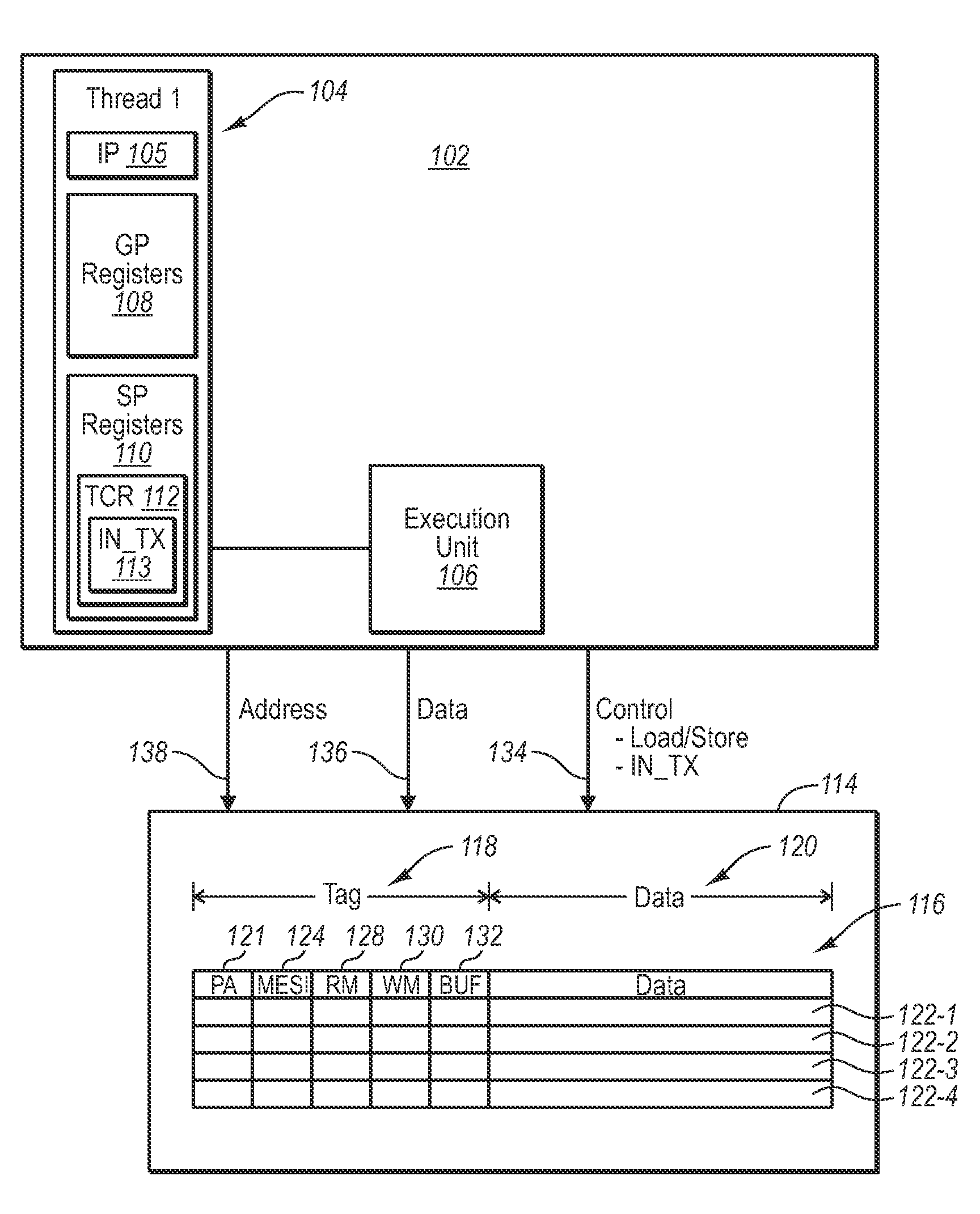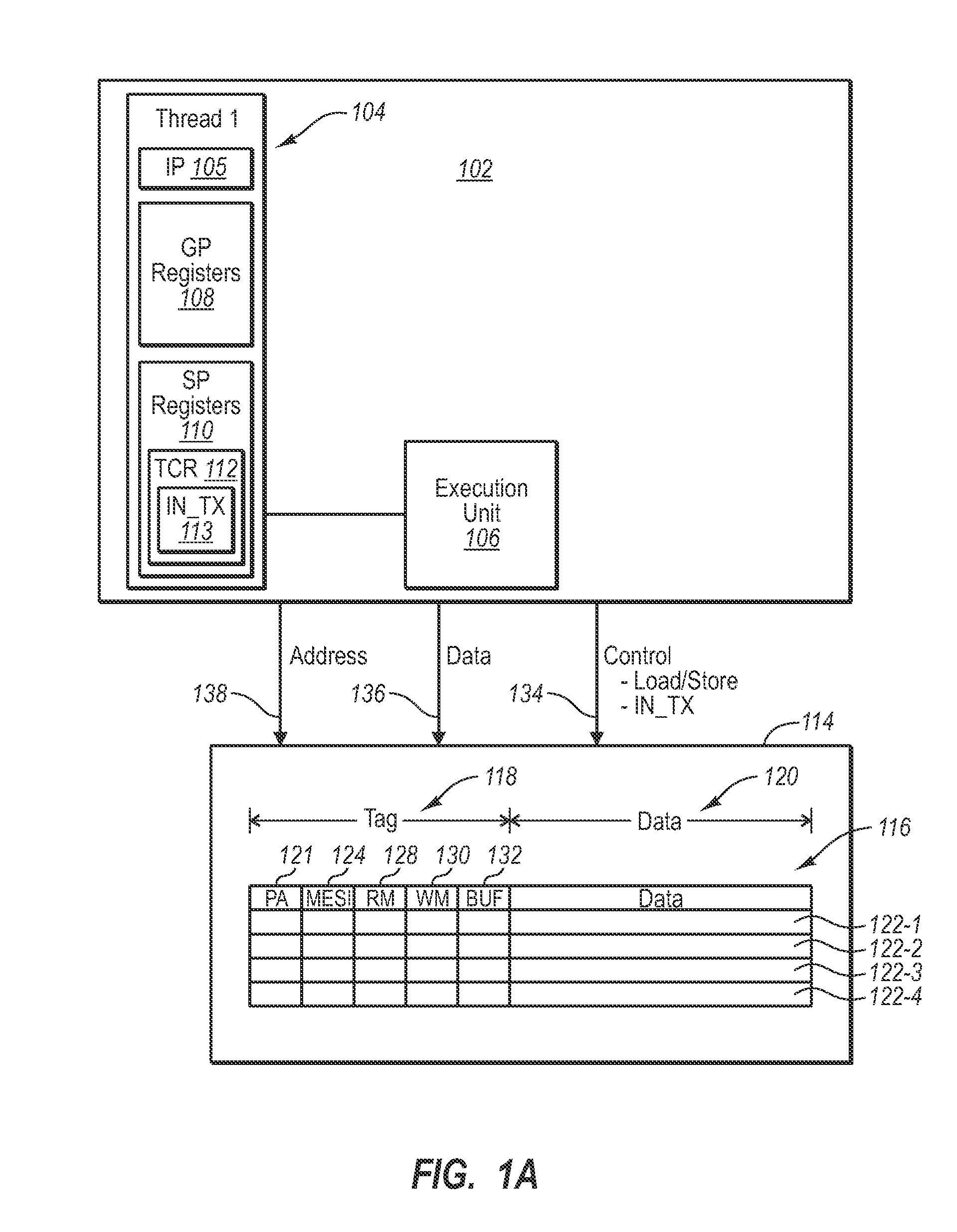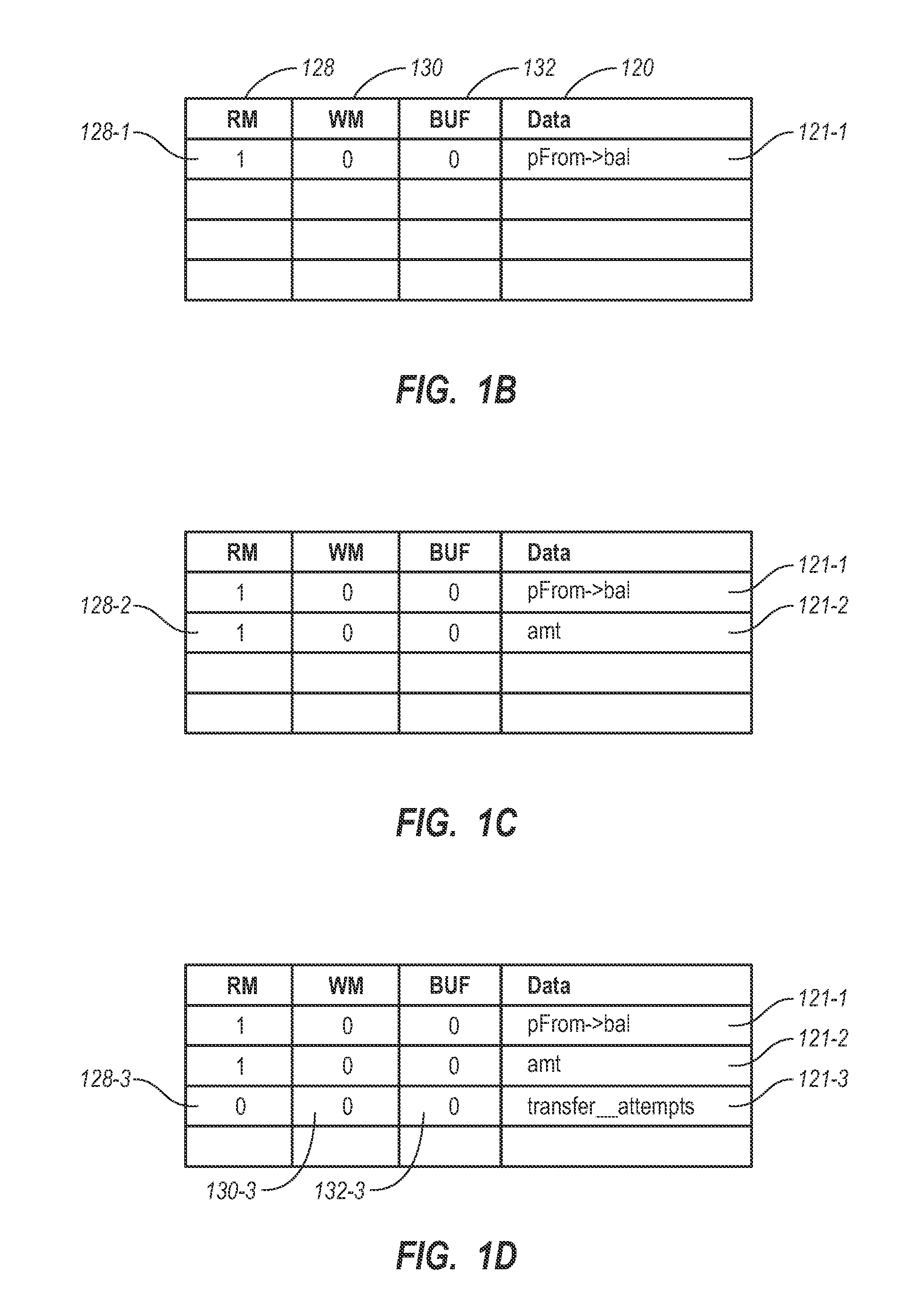Performing escape actions in transactions
a technology of escape actions and transactions, applied in the direction of memory adressing/allocation/relocation, multi-programming arrangements, instruments, etc., can solve the problems of increasing the memory access footprint of the transaction, requiring additional overhead for operations performed within the transaction, and serious problems such as the effect of affecting the execution speed of the operation
- Summary
- Abstract
- Description
- Claims
- Application Information
AI Technical Summary
Problems solved by technology
Method used
Image
Examples
Embodiment Construction
[0017]In hardware based transactional memory systems, while inside a scope of a hardware transaction, the hardware thread is typically in a mode in which all memory accesses (loads and / or stores) are automatically and implicitly monitored to ensure that, while the transaction is extant, data read by the thread is not subsequently written by another agent, and data written by the thread is not subsequently read or written by another agent. Further all memory stores are buffered by the hardware and do not become globally observed until the transaction commits, to ensure all of the stores become globally observed at the same time, and to ensure that up to that point, data stores within the transaction can be rolled back if needed. Additionally, while in the scope of a software transaction, hardware may still provide monitoring and / or buffering services. However, it may be desirable to perform some of the memory accesses in a manner that is not monitored for conflicting accesses and / or ...
PUM
 Login to View More
Login to View More Abstract
Description
Claims
Application Information
 Login to View More
Login to View More - R&D
- Intellectual Property
- Life Sciences
- Materials
- Tech Scout
- Unparalleled Data Quality
- Higher Quality Content
- 60% Fewer Hallucinations
Browse by: Latest US Patents, China's latest patents, Technical Efficacy Thesaurus, Application Domain, Technology Topic, Popular Technical Reports.
© 2025 PatSnap. All rights reserved.Legal|Privacy policy|Modern Slavery Act Transparency Statement|Sitemap|About US| Contact US: help@patsnap.com



